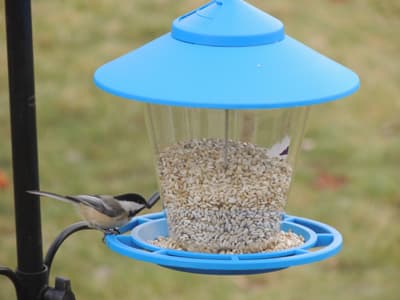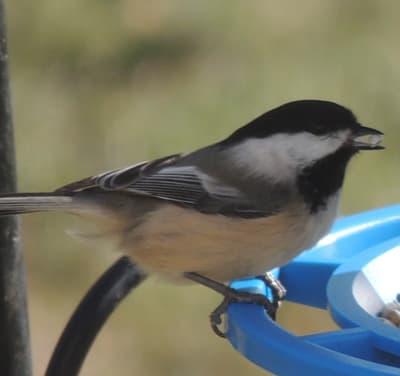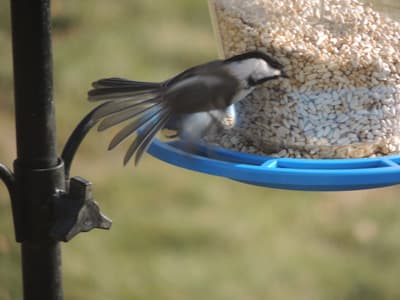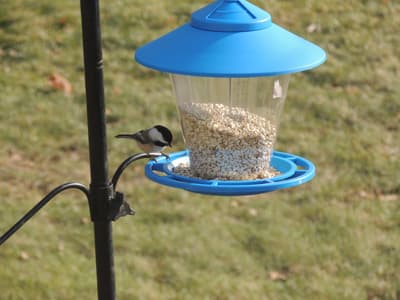Black Capped Chickadee

About the Black Capped Chickadee Bird
Cute, curious, and friendly. These are three adjectives commonly used to describe the Black Capped Chickadee. They are great adjectives, for this tiny little bird. And, the chickadee is certainly curious and friendly. It is not shy about checking out humans in their territory. After getting to know you, these small birds can be trained to eat birdseed out of the palm of your hand! All you need is a little patience and knowing what bird seeds are on the chickadee’s diet.
Chickadees are non-migratory birds. They can be found from east to west coast, in the northern U.S. and southern Canada. Once you coax them into your backyard, they will take up permanent residence. You can find them nesting in trees, especially birch and alder trees. Watch your bird feeders closely. Chickadees will not linger at the feeder for long. They grab a seed or two and fly back to the safety of a tree branch to eat the seed there. In the winter, you can find them flocking together in small groups.
The Black Capped Chickadee is readily identified by its black head and bib, with a head that is round and a little oversized. It is similar and slightly larger than its cousin, the Carolina Chickadee. The male and female look alike, with the male being slightly larger. These birds will store extra seeds in caches for consumption later. With good memories, they can find where they stored the seeds up to a month later.
Black Capped Chickadees are the state bird of Maine and Massachusetts.

Black Capped Chickadee Bird Identification
Black-Capped Chickadees are small birds, growing to about 5-6 inches. They are easy to identify. As their name implies, they have a black cap on their head. The bottom half of their head is white. Chickadees have a short beak, dull-white bellies, and alternating gray and white wing feathers. They are a member of the tit family and are non-migratory.
Chickadees are found in and around deciduous forests. They are common at backyard bird feeders year-round. You also find them in area parks.

Chickadee's Life Cycle
Chickadees live up to 12 years, with most living about 6 years. They nest from April to June in a small hole in a tree. Both males and females excavate the hole together.
Only the female will build and tend the nest. The eggs are white with fine dots of reddish-brown, concentrated at the larger end. There are usually 6-8 eggs incubate for 11-14 days. The hatchlings remain in the nest for 12-16 days.

Black Capped Chickadee Diet
In the summer, insects, especially caterpillars, make up a large part of their diet. You will often see them, going from branch to branch in search of insects. In the winter, their diet is mostly seeds and berries. Chickadees like black oil sunflower seeds, Safflower seeds, and seeds from pine trees. They also eat insect eggs and pupae.
Did You Know? Chickadees have been known to snack on dead animals. They feed on fatty deposits.
More on Birds
Here is more information on how to attract your favorite birds to your backyard:
Learn About Other Birds
Please support our site. Shop for:

- rmmatthews100@hotmail.com
- 585-721-6528
- Rochester, NY
©1999-2024 GardenersNet.Com, All Rights Reserved

